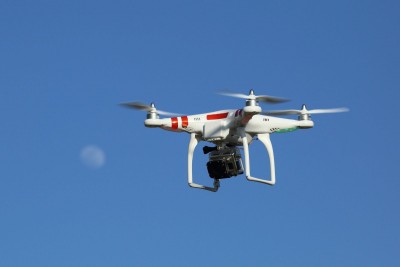
CNN signed a research agreement with the Federal Aviation Administration to begin incorporating drones into its newsgathering and reporting processes, according to a Jan. 12 press release.
The agreement is part of a broader arrangement between CNN, the Georgia Tech Research Institute and the FAA. The FAA will be using data collected from CNN’s usage of the drones to draft rules and regulations for further usage of these Unmanned Aerial Vehicles (UAVs), the release stated.
FAA Administrator Michael Huerta said in the release that the usage of these drones will have a positive impact on journalism.
“Unmanned aircrafts offer news organizations significant opportunities,” he said. “We hope this agreement with CNN and the work we are doing with other news organizations and associations will help safely integrate unmanned newsgathering technology and operating procedures into the National Airspace System.”
WGBH News Managing Editor Jeff Keating said the use of drones could help capture different perspectives not available to journalists.
“It offers tremendous opportunities,” he said. “It opens up a lot of areas that are inaccessible to journalists, and a lot of different camera angles that a journalist normally wouldn’t have unless you’re a TV Station with a camera crew.”
However, Keating raised concerns about safety issues surrounding the use of drones, especially around the public.
“We’ve already had cases of people being hit and injured by flying drones,” he said. “If you have a news station that is aggressive in how they use drones and they end up hurting someone, that is a lawsuit waiting to happen.”
In addition to safety, privacy is another issue of concern. Callie Crossley, host of WGBH’s “Under the Radar with Callie Crossley,” said the required government collaboration means that drones may not be fully beneficial to journalism in the long run.
“We’re supposed to be keeping a check on the government, and I don’t see how we can effectively do that if regulations require the monitoring of where and when drones are being used for newsgathering,” she said. “I’m not sure if this will be the case, but let’s assume so. If you are doing the job you’re supposed to be doing, there will be times when government officials would not care for the use of a drone.”
Peter Southwick, a Boston University professor of photojournalism, said drones could benefit photojournalism by offering photographic opportunities from angles not usually accessible.
“It can give photojournalism the possibility of accessing images they couldn’t get in any other way, and that is something that could be very valuable,” he said.
However, Southwick said, drone photography could lead to the abuse of privacy and regulations need to be put in place to prevent such mistreatment.
“The same standards need to apply to drone photography as non-drone photography,” he said. “I think the rules are pretty clear: If you are in a public place, you can be photographed for editorial use. If you are not in a public place, you shouldn’t be photographed whether a drone is being used or not.”
Several residents said the use of drones in news reporting would offer different perspectives, but raise some concerns.
Hollace Johnson, 39, of Fenway, said the use of drones in general raises concerns about air traffic and safety.
“I’m highly against it because of the things they can do with drones,” she said. “Look at what they do in the Middle East. I’m also concerned about what’s going to happen with air traffic, especially with helicopters and small aircrafts.”
Rony Alvarez, 19, of Brighton, said the FAA oversight of drone usage will raise concerns about government regulation.
“There’s a lot going on we don’t know about,” he said. “We’ll probably become immune to it, but this is something news organizations and government can get away with.”
Hamza Al Aoi, 23, of Fenway, said the use of drones will help journalists capture news in new and innovative ways.
“It’s great,” he said. “It will offer a new perspective and change the way we see the news.”



















































































































Hollace Johnson • Jan 23, 2015 at 1:31 pm
Great job Chris Ferus !